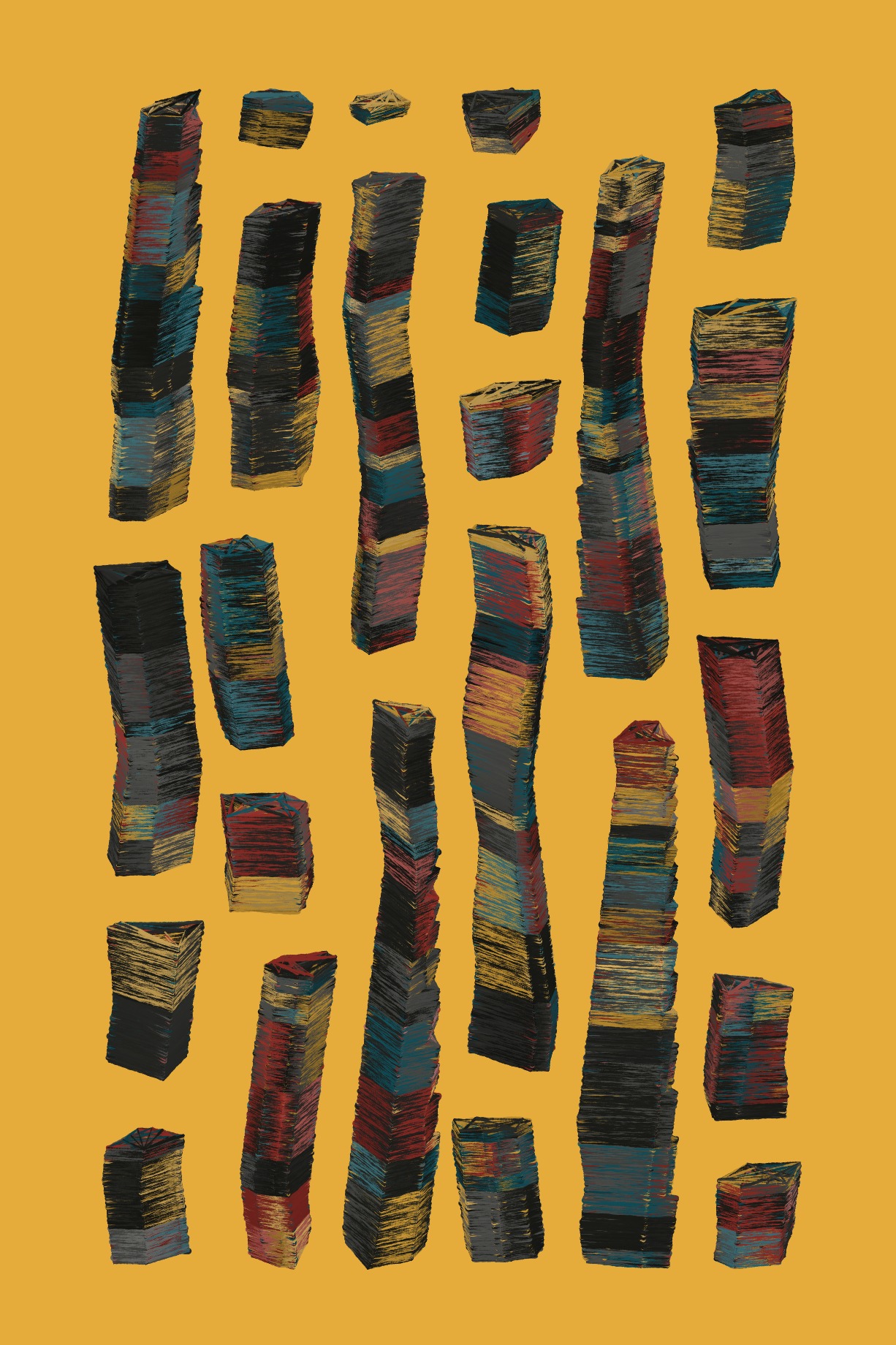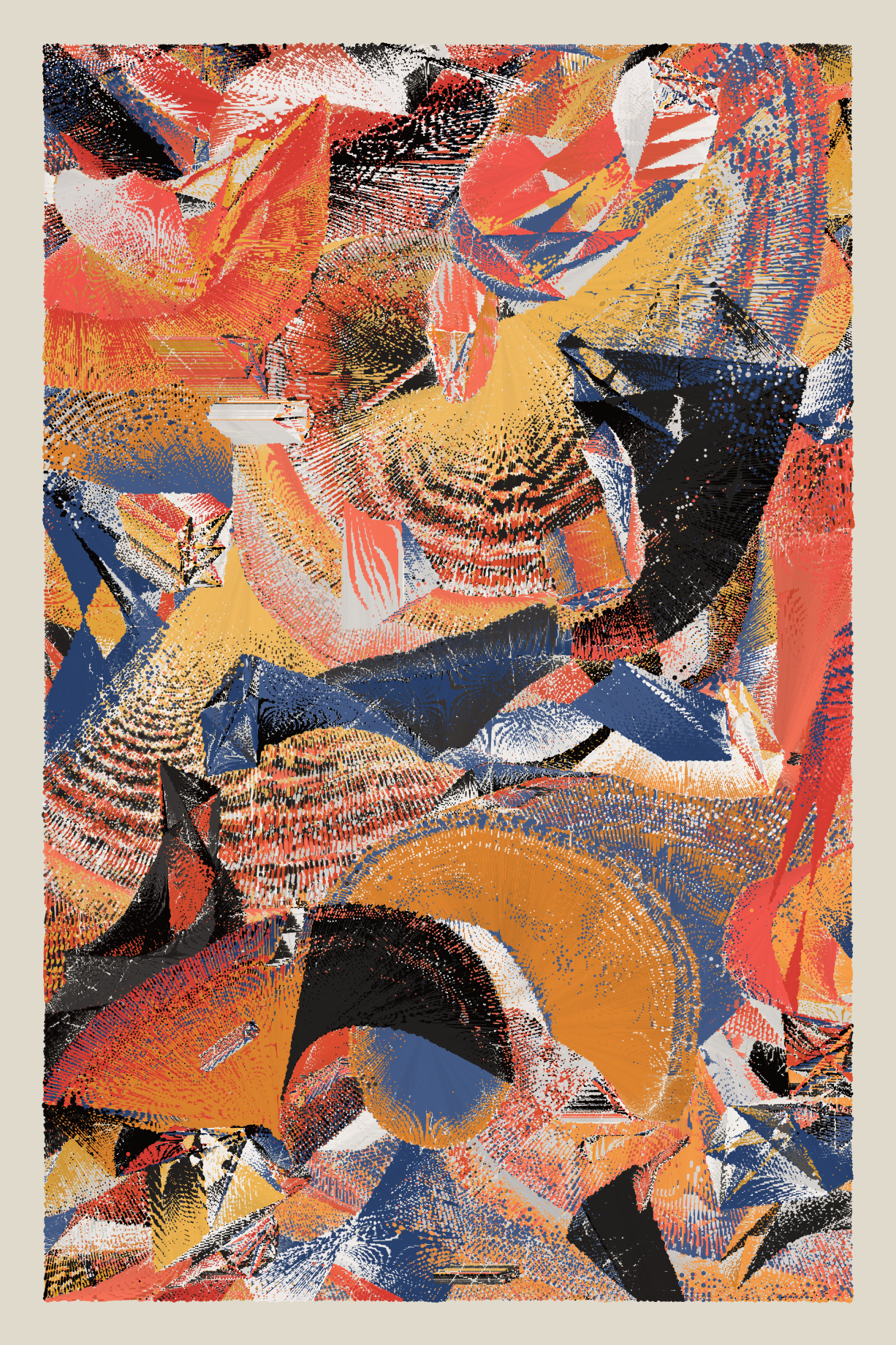top of page
Asaf Slook


I started with just 10 dots and connected all of them to each other, which created a diamond-like shape. This exact same technique used to be fun for me when I was a child, using a ruler and a pen.


Than I used this shape and draw with it creating a unique stroke. It looked like a bunch of bookes or papers stacked on top of each other.


I attempted to draw on a grid, but I found it to be boring. Although the texture was interesting, the composition appeared weak and mechanical.


While developing the grid, I implemented a collision detection feature that caused the strokes to become slightly distorted and buggy.


Bye-bye, grid. It was fun!


Then I tried to fill the scene with the new texture, but I didn't quite know what I want. However, I realized that there was something new here.


Then I started experimenting with flow fields and stroke collision.


Oops! This is something quite familiar...


I tried the flow field again, increased the stroke size, and rotated it slightly, revealing a new path.


The rotation was great, but I needed to see how it looked without it first.


Then, a lot of black was added to the scene to highlight the colors and textures.


Re-thinking about the curves, and how to predict and control them.


The algorithm at this point became very versatile, which, for me, is the core of generative art.


The curves really catch my attention, so I've started thinking about adding more of them.


Exploring other color palettes without the black as base/main color.


And we are...


Here.
Backwards is all about drawing on empty canvas with brush strokes. But then there is something new, all the strokes are applied below the previous layers. This concept is far away from the ordinary way that materials behave in nature, highlight a really interesting property of the digital. In this project I try to share my flow of thoughts or decisions made during the process.
bottom of page